- Home
- Accommodation
- Activities
- Area Info
- Maps
- Photo Galleries
- Real Estate
- Travel
Land Animals Found in Montezuma
Six Types of Wild Cats
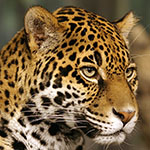 |
Jaguar – Jaguar is known to be the largest carnivore in Central America. Though it is the face of most advertisements about Costa Rica, their numbers are fast depleting from the region. Jaguars have recently been sighted at Delicias, Malpais, Manzanillo and Cabo Blanco. |
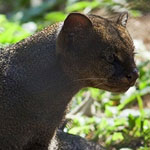 |
Jaguarundi – The jaguarundi looks like a mix of a cat and a weasel with its smooth frame, small legs and a tiny head. It is known to be an adept swimmers and unlike most wild cats, it during both day and night. The creature looks scary (some would say ugly) in comparison to other wild cats due to its haunting eyes, stretched out face, unusually thin body structure and the dark fur. |
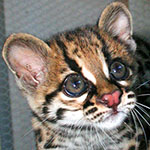 |
Margay Cat – The margay cat is an arboreal creature and spends most of its life on trees. It is known to be a very adroit climber since its ankle joints can rotate the foot by 180 degrees. Margays, like other cats, mark their territory with their urine. Margays survive on monkeys, rodents, small reptiles and insects. They are also infamous for attacking chicken coops. |
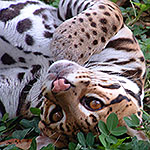 |
Ocelot – The ocelot is the largest of the small cats found in the region, weighing 30-40 pounds. It is generally spotted hiding on the ground and is not known to be much of a tree climber. These incredibly beautiful, nocturnal creatures mostly hunt post sundown and their diet primarily comprises birds, monkeys and other small mammals. |
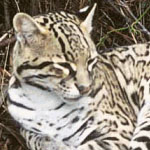 |
Oncilla – The oncilla is the smallest wild cat found in the region, which is not larger than a regular house cat. They are solitary creatures. Though the average lifespan of the oncilla is about a decade, there are reports of them surviving for up to a decade and a half. Oncillas possess a small body frame that allows them to be incredible hunters while preying on insects, rodents, reptiles and smaller primates. |
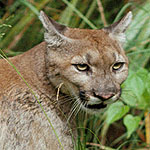 |
Puma – One of the largest cats in the region, second only to the Jaguar in weight, the Puma is a highly adaptive wild cat that can survive anywhere from, tropical rainforests to coniferous forests. The puma gives birth, on an average, to about 2-3 young ones every couple of years. Their average lifespan is about a decade about they are known to survive for a couple of decades in captivity. |
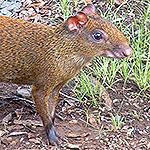 |
Agouti – The agouti looks like the bigger cousin of the guinea pig. It lives on fruits and seeds that carefully stored in the ground, thus helping the process of seed dispersion. When scared the agouti’s hair becomes erect and they run with a very shrill bark. Since wild running dogs kill them frequently, their numbers in the wild are fast depleting. |
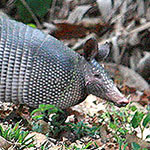 |
Armadillo – Description |
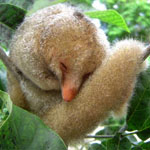 |
Anteater (Silky) – Costa Rica’s smallest anteater, the “Silky Anteater” is about the size of a tennis ball, and it looks like one when it curls up. They are very shy and almost never seen… and are completely unknown to the vast majority of people who have lived in the Montezuma area all their lives. |
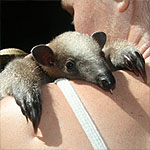 |
Anteater (Tamandua) – A distant relative of sloths, tamanduas are mostly found in the lowland and moderate-elevation habitats. Their sticky tongues and especially tailored mouths allow anteaters to eat up to 10,000 ants a day. Lesser anteaters have a gestation period of about 120-150 days and generally mate during the fall season. Due to a loss of their natural habitat, giant anteaters are on the verge of extinction in Costa Rica. They have most recently been spotted at the Corcovado National Park on the Osa Peninsula. |
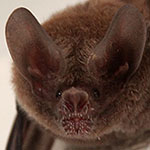 |
Bats – Costa Rica houses about 110 bat species. Most bats that live here are nocturnal creatures, hence they are best viewed at night, when they seen swooping low through the air, looking out for insects or fruits. All bats possess forelimbs at birth that later evolve into wings, making them the sole mammal species capable of flying. Bats can be either solitary or social; sometimes living in large caves inhabited more than a million of their species. The more social bats are often a part of a complicated social structure, where big groups bifurcate into smaller subgroups for the performance of everyday tasks. |
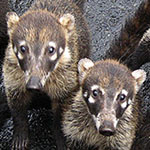 |
Coati – Description |
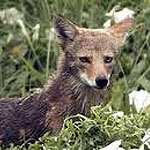 |
Coyote – Coyotes are canine species and often mistaken for stray dogs. They are known to move about in monogamous pairs during the peak breeding season. The females birth 5 to 10 pups in a den after a gestation period of 60-65 days, and a coyote’s life span can reach up to ten years in the wild. They can be spotted in most national parks of Costa Rica including the reserves near Montezuma, and also wander around populated areas looking for food, such as house-cats or small dogs (yes, Wile E Coyote is a cannibal!) |
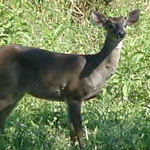 |
Deer – Deer in Costa Rica are fairly common, despite being one of the favorite prey animals of illegal hunters. The species here is nearly identical to that in the United States and Canada, except a bit smaller. Despite the pressure on them due to poaching, there are still plenty around, probably because their main predators (Jaguars and Pumas) are more rare in the area than they were before humans came to dominate the area. |
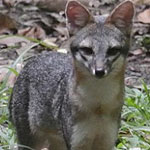 |
Fox – Description |
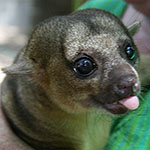 |
Kinkajou– Kinkajous can rarely be spotted in the day since they fiercely avoid sunlight. In the night, they are heard making short bark like sounds. Their appearance is extremely cute and teddy bear, pet like with huge dark eyes, small ears and a tan colored fur. The kinkajou’s prehensile tail is very long and helps them to climb treetops efficiently in search of food. |
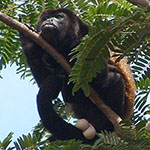 |
Monkey – Howler – Famous their full-throated howls that can be heard for as far as three miles, howler monkeys are the nosiest of all New World primates. Their characteristic vocal communication is either for establishing their territory or a way of interacting with other monkeys within their troop. Females breed once every two years and generally give birth to an offspring after gestation period of six months. They have a large frame and an average life span of about seven to fifteen years. A distinct feature of their body is their long prehensile tails, which helps them in acquiring a strong grip on branches when they swing about the forest canopies for food. |
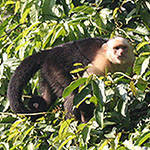 |
Monkey – White Faced Capuchin – The white faced capuchin monkey is extremely popular with humans and is often kept in captivity as an exotic pet. It is also known for its contribution in maintaining the ecological equilibrium of the rain forest by scattering pollen and other plant seeds. The white faced capuchin is generally an omnivore with its dietary intake consisting of both fruits and insects. This affable mammal has a life span of more than 50 years which makes it one of the longest surviving species on earth. They live in groups of 5-10 animals which are led by the alpha male of the group followed by the alpha female. Capuchins are known to be one of the most intelligent mammals and have been known to assist paraplegics in their everyday tasks. |
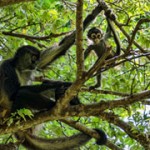 |
Monkey – Spider – Spider Monkeys are currently considered extinct in Montezuma. However, at Curu national park to the north, there’s a reintroduction program for them, and a single family troop is thriving in the jungle there. With protection and luck, the spider monkeys will once again roam the area’s jungles as they did for millions of years before they were killed or captured. |
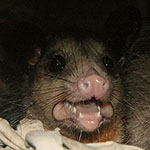 |
Oppossums – Two types – Four eyed oppossum, Common Oppossum |
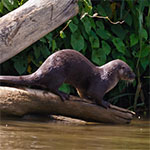 |
Otter – River Otters are carnivores that usually feed on fish, selfish, other aquatic species and invertebrates, aerials and small mammals. Otters are cute, affable creatures that live both on land. They generally live on land but very close to the sea coast. Otters are known to be extremely sociable and are often seen having a fun time in a group. Onlookers love watching them since their extremely active and fun. The gestation period for an otter is about 60 to 86 days, and the new born is collectively cared for by the mother, father and all siblings. |
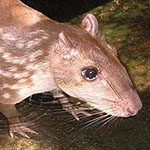 |
Paca – Description |
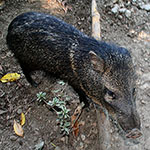 |
Peccary – Peccaries (also known as shunk pigs) are mammals that are primarily spotted in the jungles of North America and throughout Central and South America. They are omnivorous eaters and are known to live on a varied diet ranging from roots to fruits to worms and insects. In Costa Rica, researchers have discovered that the peccary dietary preferences vary according to the season. The female gestational period lasts for five months, and females give birth to 1-5 young ones at a time however, out of which only a couple survive. The Costa Rican Collared peccaries are beige or chestnut in color, and have been found to run within hours of their birth. |
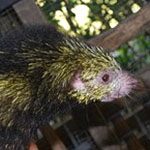 |
Porcupine – The porcupine belongs to the rodent family. It has a black to brownish-yellow fur, and is extremely strong yet tiny feet. Their soles are hairless and help them in climbing trees fast. Porcupines have a round frame, small ears and a puny head. The most distinguishable feature of the porcupine are its quills. The porcupine deftly uses its quills for defence when they sense a predator approaching. The porcupine will elevate its quills and hit out at its threat with full force. If the porcupine hits a creature with its perilous quills, the quills become deep-rooted in the animal. |
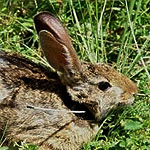 |
Rabbit – Description |
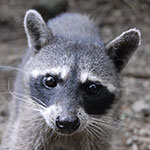 |
Raccoon – Weighing from 6.5 to 16 kg, the raccoon is an omnivorous mammal that is mostly spotted in the wooded countryside regions. They feast on variety of foods including tiny aquatic creatures, snakes, frogs, birds, earthworms and insect larvae. Though known to survive in the wild for only a couple of years, some have gone on to live for up to 13 years. Racoons are solitary, peaceful and non territorial creatures. The raccoons usually mate during the winter season, when the male runs from one burrow to another in search of the ‘perfect’ female partner. |
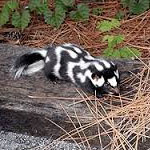 |
Skunk – Spotted – Skunks are part of the Mustelidae family that also comprises badgers and other burrowing creatures. Skunks are mammals known for their peculiar trait of secreting a liquid that produces an extremely foul smell, owing to the two anal scent glands located on either side of their anus. They tend to breed during the late winter season and have a gestation period of approximately nine weeks. These mammals vary in size from about 40-94 cm and possess an elongated body with tiny yet strong muscled feet and tapering front claws helpful for digging. |
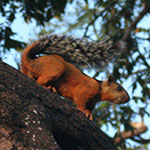 |
Squirrel – Description |
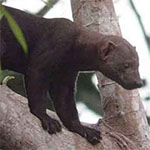 |
Tayra – This large brown/black weasel is a close cousin of the mink and otter. It has a long and slender frame and strong claws that allow it to climb trees fast. Tayras are inquisitive foragers and feast on a large variety of foods. They explore the jungle solo or in family groups, and are extremely vocally communicative while interacting within themselves. Though known for their preference for green tropical jungles, they are also found in dry deciduous woods. |
Great Stuff

Clandestina Restaurant
My new favorite restaurant, Clandestina is not to be missed by food lovers staying anywhere near to Montezuma. Established in March 2015, Clandestina is the new kid on the block. The Oregon/Tico collaboration is a winner among locals and travelers alike, with artisan craft beers, made onsite by Butterfly Brewing Co. and delicious, exciting […]











